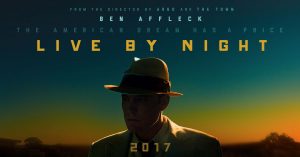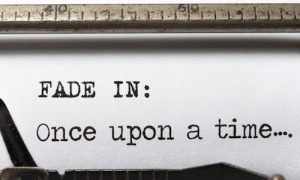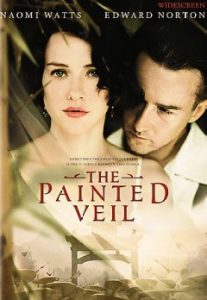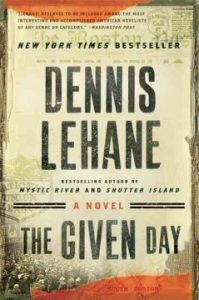The Guardian describes the newly-released adaptation of Dennis Lehane’s novel “Ben Affleck’s love letter to – and hopefully death knell of – the classic Hollywood gangster flick.”

And while the first part of this is definitely true, I think the latter part of that statement is unfair. Its’ true that Ben didn’t seem able to decide what he wanted with this film–it’s a movie that tries to be both a faithful adaptation and a contemporary commentary on the period in which it’s set; it’s also a movie that is so dedicated to looking and sounding like a “classic” film (Affleck’s goal in writing/director/starring in the thing) that it forgot to feel. But what I think is really the problem here is the one that book lovers despair over every time they go see an adaptation like this one.
The book was better.
Generally speaking, this is true because a book gives you several hundred pages, typically, to get to know a character, to learn to feel something (love, like, hate, curiosity) about them, and to watch their story unfold. Unless you speed-read or skim, books generally take a number of hours to consume. Movie give you two hours, give or take thirty minutes or so. Even the most subtle of screenwriters can’t jam all the events, all the emotions, all the logistics of a novel into a script. And no actor, however gifted and experienced, can spell out on screen the mental processes that you can on a page. So choices have to be made.

Sometimes, that works out well. Because, while movies can’t describe things the way books can, books can’t show things the way the movies can. In this way, I think Live by Night succeeds. The costumers, the scenery, and the props are stunning, and, even if those 1920s Packards are driving far faster than the real ones were capable of doing, they allow you a glimpse into the world of the book that isn’t always easy to do in your imagination. I, for one, can’t imagine Florida without the urban development and sky-scraping condos I’ve seen on postcards. This film gave the the panorama of the coast without those buildings, and made it really easy to understand the potential that Joe Coughlin, our erstwhile hero, and his business partners saw upon their arrival.
 Sometimes, films can provide options that books can’t. Douglas Adams, for instance, substantially re-wrote his The Hitchhiker’s Guide to the Galaxy for every adaptation, which allowed him to try new plots and character development each time around. Other adaptations explore moments that books intentionally don’t–my mind goes right to the Red Room scene in Jane Eyre, which is a seminal, if understated, moment in the book, but generally a hugely important scene in films. For me, the recent adaptation of Maugham’s The Painted Veil was incredible, because it made explicit through film the elements that Maugham couldn’t. Because the events of the book are only seen through the heroine Kitty’s eyes, we can’t see clearly the effect of her choices on her husband Walter. But this film let’s us meet Walter more clearly, and, even though it is a faithful adaptation, it also allows us to see more of their relationship than Maugham did (and more of Hong Kong itself, which is a huge bonus, too).
Sometimes, films can provide options that books can’t. Douglas Adams, for instance, substantially re-wrote his The Hitchhiker’s Guide to the Galaxy for every adaptation, which allowed him to try new plots and character development each time around. Other adaptations explore moments that books intentionally don’t–my mind goes right to the Red Room scene in Jane Eyre, which is a seminal, if understated, moment in the book, but generally a hugely important scene in films. For me, the recent adaptation of Maugham’s The Painted Veil was incredible, because it made explicit through film the elements that Maugham couldn’t. Because the events of the book are only seen through the heroine Kitty’s eyes, we can’t see clearly the effect of her choices on her husband Walter. But this film let’s us meet Walter more clearly, and, even though it is a faithful adaptation, it also allows us to see more of their relationship than Maugham did (and more of Hong Kong itself, which is a huge bonus, too).

But sometimes, it just doesn’t work. And that is where Live By Night becomes a bit of a cautionary tale. This isn’t Ben Affleck’s first time adapting Dennis Lehane. He adapted Lehane’s Gone Baby Gone in 2008. But my problem with both these films is that they are books in the middle of series. Granted, they might be the strongest books in the series (though I would disagree about Gone Baby Gone. Darkness, Take My Hand will always be my favorite book in the series, hands down…). But the fact remains that you are, essentially, forcing a movie-going audience to come to enter a conversation that’s been going on for days. Or invited them to the high-school reunion of a school they didn’t attend. Or, perhaps most appropriately, to a book club where they didn’t read the book.
 This isn’t fair to a book-loving crowd who knows these characters well and don’t need the necessary introductions you have to cram into the film to get everyone up to speed on who’s who. And it isn’t fair to the crowd who haven’t read the books, because you there is so much work to do to establish relationships and history and desires and trajectories that are fully covered in other books. In The Given Day (the first book in Joe Coughlin’s three-book tale), we come to understand the devastation the First World War had, not only on the bodies of those who fought in it, but on their outlook, on their belief in their country and themselves, and the xenophobia that took root across the United States during this time. In the film, this is summed up in two lines and some stock photos. In Live By Night, we get to see the results of those events, and understand why Joe is the way he is…not because the voice-over told us, but because we were there with him. In Live By Night, we get to reference the racial tensions that the Coughlin family encounters, but they remain background noise to Joe’s life story. In the books, race and identity are a crucial and deeply complex parts of the story, so much so that without them, the plot doesn’t hang together correctly. Joe is a man shaped by those around him, but this film can’t afford the time to show his creation, so he emerges as a man with some incredible suits and the right words to say, but without a soul or a heart. And while the film Live By Night can take us to some stunning places, it can’t get us inside the characters the way three books could.
This isn’t fair to a book-loving crowd who knows these characters well and don’t need the necessary introductions you have to cram into the film to get everyone up to speed on who’s who. And it isn’t fair to the crowd who haven’t read the books, because you there is so much work to do to establish relationships and history and desires and trajectories that are fully covered in other books. In The Given Day (the first book in Joe Coughlin’s three-book tale), we come to understand the devastation the First World War had, not only on the bodies of those who fought in it, but on their outlook, on their belief in their country and themselves, and the xenophobia that took root across the United States during this time. In the film, this is summed up in two lines and some stock photos. In Live By Night, we get to see the results of those events, and understand why Joe is the way he is…not because the voice-over told us, but because we were there with him. In Live By Night, we get to reference the racial tensions that the Coughlin family encounters, but they remain background noise to Joe’s life story. In the books, race and identity are a crucial and deeply complex parts of the story, so much so that without them, the plot doesn’t hang together correctly. Joe is a man shaped by those around him, but this film can’t afford the time to show his creation, so he emerges as a man with some incredible suits and the right words to say, but without a soul or a heart. And while the film Live By Night can take us to some stunning places, it can’t get us inside the characters the way three books could.
